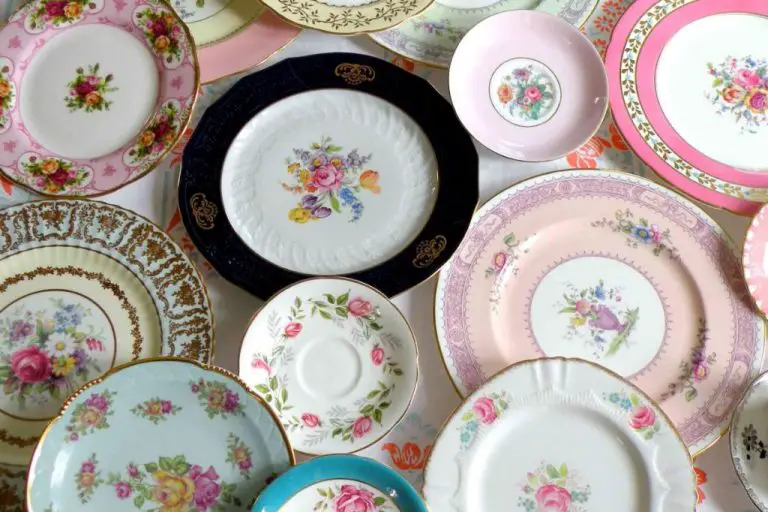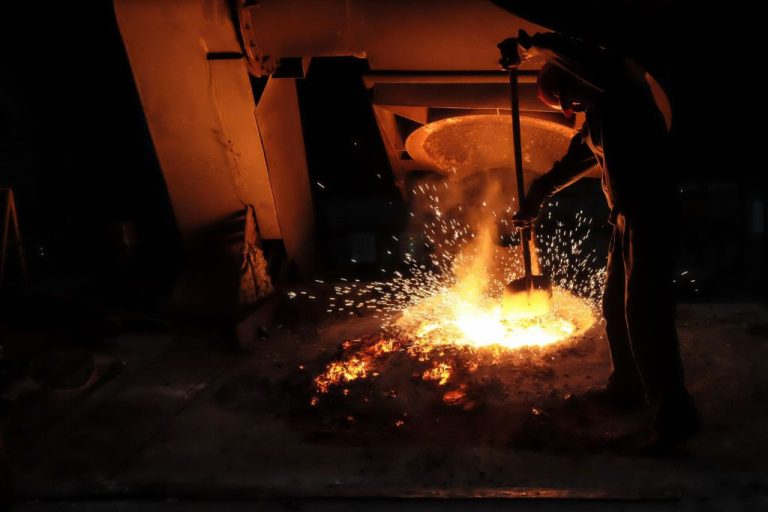Can You Make Homemade Pottery Clay?
Making your own pottery clay at home can be a fun and rewarding craft project. Homemade clay enables you to create original pottery pieces without having to purchase premade clay from a craft store. This gives you full creative freedom when sculpting your pottery designs.
The purpose of making homemade clay is that it provides a cost-effective and customizable clay material to use for arts and crafts. Rather than buying premixed pottery clay, which can be expensive, you can mix up a clay recipe using basic ingredients you likely have at home. This allows you to produce clay specifically tailored to your preferences and needs.
Ingredients Needed
The two main ingredients you’ll need to make homemade pottery clay are clay powder and water. Let’s look at each one:
Clay Powder
Any natural clay will work, but pottery or ceramic clays are best as they’re designed for shaping and firing. Look for pre-mixed clay powers labeled for pottery or ceramics. These contain the right mix of clays and minerals. Popular options include:
- Air-dry clay
- Earthenware clay
- Stoneware clay
- Porcelain clay
You can find these easily online or at local craft stores. Get at least 1-2 lbs to start experimenting.
Water
Plain tap water is fine. You’ll add it gradually to get the right consistency.
Step-by-Step Process
Making homemade pottery clay is a simple process that involves just a few key steps:
First, start by mixing the clay powder with water in a large bowl or bucket. You’ll want to add water gradually and mix thoroughly until a doughy consistency is achieved. The exact amount of water needed will vary based on the specific clay ingredients used.
Next is the kneading process. Knead the clay thoroughly for 5-10 minutes. This helps blend the ingredients evenly and develop the plasticity of the clay. Knead the clay against the sides of the container, pressing into it with the heels of your hands. Fold the clay over itself and continue kneading until it becomes soft, smooth, and pliable.
Kneading helps ensure there are no lumps or dry pockets within the clay. Well-kneaded clay is supple and homogeneous in texture. Don’t rush this step – kneading is crucial for making clay that’s nice to work with.
Ideal Clay Consistency
The ideal consistency for homemade pottery clay is when it is smooth, pliable, and not too sticky or dry. Here are some tips for getting the right consistency:
- If the clay is too wet and sticky, mix in some more flour, cornstarch, or powdered clay a little at a time until it reaches the desired consistency.
- If the clay is too dry and crumbly, mix in water a teaspoon at a time until it becomes smooth and pliable.
- The clay should be moldable but should not stick excessively to your hands. You want it to hold its shape without becoming misshapen.
- Avoid over-mixing once you achieve the ideal consistency as this can introduce air bubbles.
- Let the clay rest for 30 minutes wrapped in plastic after mixing, then knead briefly again before using.
It may take some trial and error to find the perfect moisture balance for your specific clay recipe. But with some practice, you’ll soon get a feel for the ideal smooth, pliable clay texture you need for sculpting and handbuilding pottery.
Storing the Clay
Properly storing your homemade clay is important for keeping it usable for pottery projects. As you’re working with the clay, it’s crucial to keep it moist and sealed so it maintains the right consistency.
After kneading and conditioning your clay, wrap it thoroughly in plastic wrap or place it inside a ziplock bag, squeezing out any excess air. You want the clay to be protected from air exposure so it doesn’t dry out.
Store the wrapped clay in an airtight plastic container or Tupperware. Make sure the lid seals tightly. This will prevent moisture from evaporating from the clay.
Check on the clay every few days and knead it through the plastic wrap/bag. Add a few drops of water if it starts to feel stiff. The clay should maintain a smooth, pliable texture.
Properly stored homemade clay will keep for at least a few weeks in the refrigerator, and for several months in the freezer. With the right care, your clay will be ready to use whenever inspiration strikes!
Using the Clay
Once you have made your homemade clay, the fun part begins – using it to make pottery and sculptures! Here are some tips for working with your clay:
Molding into Shapes
The clay can be molded into basic shapes like bowls, cups, vases, and pots. Start by kneading the clay thoroughly to remove any air bubbles. Form the clay into a ball and then press it into your desired mold or shape. Smooth the sides and edges using your fingers or a rounded modeling tool. Allow it to dry completely before removing it from the mold.
Sculpting
Sculptures allow you to shape more intricate designs. Roll pieces of clay into balls, teardrops, or coils and attach them together, blending the seams smooth. Use knives, forks, wooden tools, or your fingers to carve patterns and details into the clay. Let your imagination run wild to create animals, figures, abstract shapes, and more. Allow the completed sculptures to dry fully before handling.
Firing/Baking
Firing or baking your homemade clay is an essential step to harden and finish the clay pieces. You have two main options for firing: using a kiln or baking at home in your oven.
Kiln firing will produce the best and strongest results, as kilns can reach the high temperatures of over 1000°F required to fully vitrify and harden clay. Kilns also allow precise control over the firing schedule and temperature. However, kilns can be prohibitively expensive for hobbyists.
As an affordable alternative, you can bake your clay creations at home in a standard oven. Use an oven thermometer and aim for the highest temperature your oven reaches, ideally between 200-300°F. Place pieces on a baking sheet lined with a non-stick surface. The process will take longer, between 4-6 hours, to fully harden the clay at the lower oven temperatures. Results may not be as strong and durable as kiln-fired pieces.
Test small pieces first when baking clay in an oven to ensure it hardens properly without cracking or warping. Home baking takes patience and experimentation to perfect.
Glazing
Glazing allows you to add color and make your homemade pottery shiny and waterproof. There are a few main types of glazes to use:
Low-fire glazes – These glazes are formulated to mature and become glassy at low kiln temperatures, usually around 1600°F. They’re easier to use and often come premixed. Low-fire glazes work well for items like mugs and bowls.
Mid-range glazes – Mid-range glazes mature around 2000-2200°F. They produce more durable finishes. Common types are cone 4-6 oxidation glazes. Mid-range glazes allow more customization of colors and effects.
High-fire glazes – High-fire glazes mature at the highest kiln temperatures, around 2300°F. They create a strong, permanent glass coating and work well for functional pottery. High-fire glazes produce brilliant colors but can be more difficult to use.
When applying glazes, there are a few techniques to get great results:
– Use multiple thin layers rather than one thick layer for an even coating.
– Allow each layer to dry before adding another to prevent dripping.
– Apply with a range of tools – brushes, sponges, or pouring to create effects.
– Leave some areas unglazed for contrast and to showcase the clay surface.
– Fire according to the manufacturer’s specifications for proper melting of the glaze.
Tips and Tricks for Homemade Pottery Clay
Here are some tips and tricks for avoiding common issues when working with homemade pottery clay:
Avoiding Cracks
Cracks in finished pottery pieces are often caused by improper drying or firing. Here are some tips to prevent cracks:
- Dry pottery slowly and evenly to prevent cracking – avoid quick drying methods like direct sun or heaters.
- Avoid dramatically changing drying environments – don’t move pottery from very humid to very dry areas.
- During firing, raise the kiln temperature slowly over several hours.
- Allow pottery to fully cool in the kiln before removing – don’t shock pottery with sudden temperature changes.
- Avoid making pottery pieces too thin or using clay that is too wet, as these are prone to cracking.
Achieving Smooth Finishes
It can take practice to achieve smooth, professional finishes with homemade clay. Here are some tips:
- Use plastic tools instead of metal, which can leave scratches.
- Keep tools and hands wet when smoothing clay surfaces.
- Use a rib tool to compress and smooth surfaces.
- Use plastic interface sheets when rolling out clay to avoid sticking and wrinkles.
- Sand dried pottery pieces with fine sandpaper to remove small imperfections.
- Apply liquid clay slips to fill in small cracks and holes for a smooth surface finish.
Conclusion
Making your own pottery clay at home has many benefits. Homemade clay is inexpensive, fun to create, and highly customizable. You can experiment with different ingredients and proportions to achieve the exact texture and consistency you want for your pottery projects.
The process of making clay is also relatively simple. All you need are a few basic ingredients like flour, salt, and water. Mix these together, knead thoroughly, shape into a ball, and allow time to condition. Then you’ll have pliable clay ready to handbuild pots, sculptures, or anything you can imagine.
With some trial and error, you can master making high quality air-dry or oven-bake clay. Get creative with natural clays dug from the earth or recyclable materials too. Making your own pottery clay is an enjoyable DIY project that lets you be in control of the entire ceramic art process, from crafting the clay to decorating the final fired pieces.


